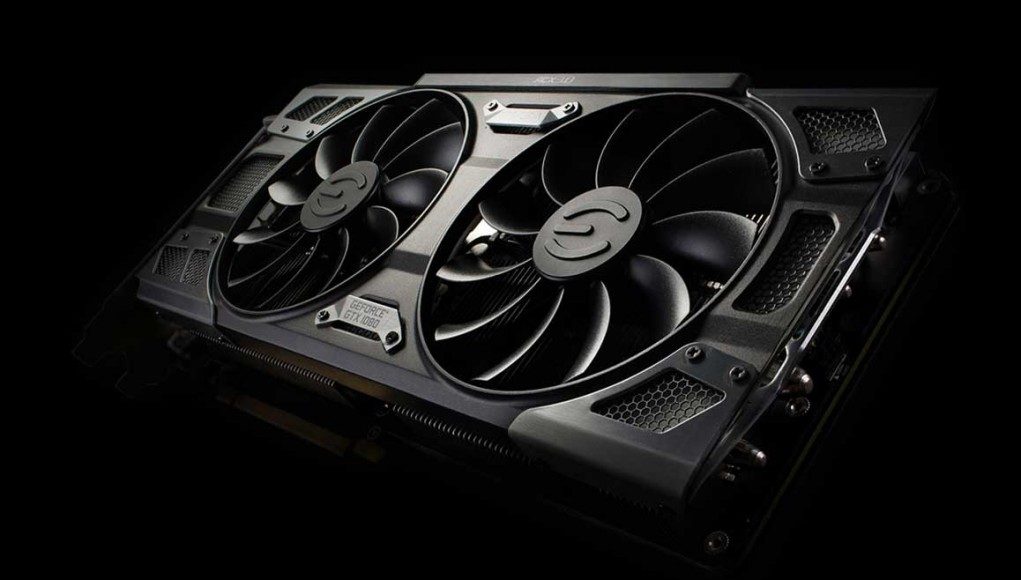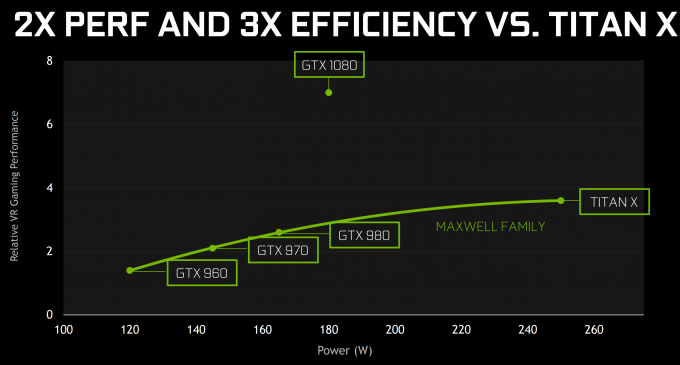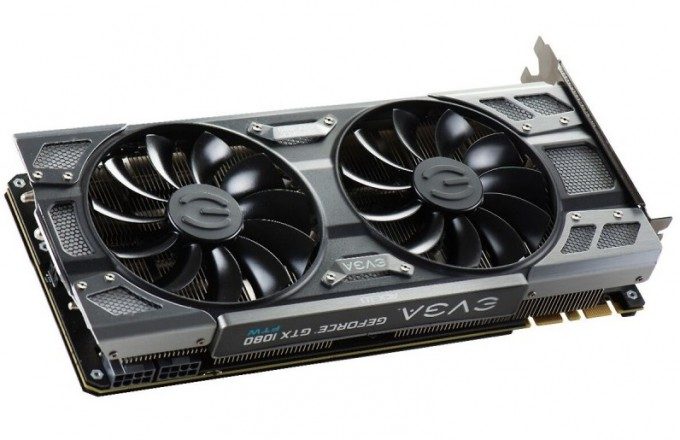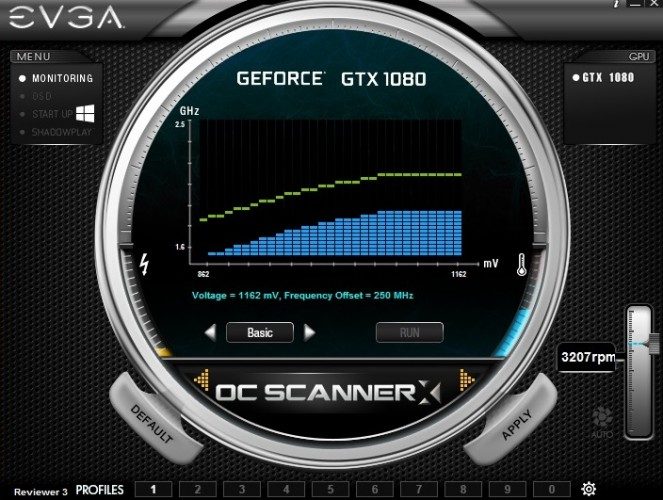One of Nvidia’s most important GPU launches in years is under way with the first card based on the company’s latest 16nm ‘Pascal’ architecture, the GeForce GTX 1080, available to buy now in its ‘Founders Edition’ form. But if you can resist the urge to buy now, here are some good reasons to wait.
Nvidia’s latest GPU is a big deal, for the company celebrating the launch of its first 16nm Pascal architecture, the new platform brings with it some major architectural changes and, for virtual reality users, some potentially huge performance gains in the future thanks to the introduction of hardware accelerated Simultaneous Multi-projection and Lens Matched Shading, which claims to vastly improve the kinds of stereoscopic, multi-viewport rendering that VR relies on for immersion.
The GeForce GTX 1080 was revealed to the world in early May with Nvidia bullishly announcing that the card would outperform the company’s then flagship card the Titan X, but for much less money and using far less power, generating less heat. Over and above the performance gains we saw when we tested the GTX 1080’s performance, we also noted that thanks to that low power draw, the overclocking potential of the GTX 1080 was pretty substantial.
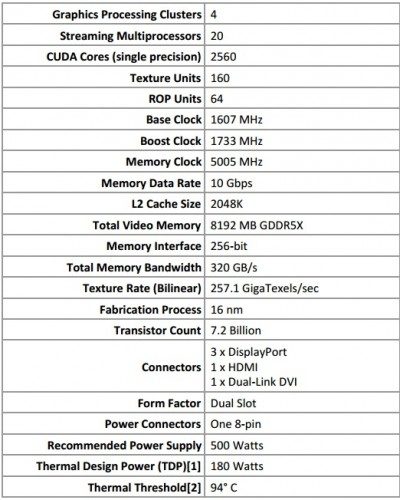 Nvidia’s new flagship card is the first in their latest 16nm process ‘Pascal’ line of silicon, and the GTX 1080 sports the latest GP104 GPU, fabricated using so-called ‘3 dimensional’ FinFet transistors (check this excellent explanation of the differences between standard MosFet and FinFet here). All this at a 16nm fabrication scale means the GTX 1080 now boasts over 7 billion transistors. The GTX 1080’s base clock of 1607MHz boosts at stock to 1733MHz under load and the card comes loaded with 8GB of GDDR5X VRAM. Check out the rest of the specs in the image to the right.
Nvidia’s new flagship card is the first in their latest 16nm process ‘Pascal’ line of silicon, and the GTX 1080 sports the latest GP104 GPU, fabricated using so-called ‘3 dimensional’ FinFet transistors (check this excellent explanation of the differences between standard MosFet and FinFet here). All this at a 16nm fabrication scale means the GTX 1080 now boasts over 7 billion transistors. The GTX 1080’s base clock of 1607MHz boosts at stock to 1733MHz under load and the card comes loaded with 8GB of GDDR5X VRAM. Check out the rest of the specs in the image to the right.
The Founder’s Edition of the GTX 1080 ships with a core GPU clock rate of 1607Mhz, boosting to 1733Mhz and memory at just over 5Ghz. In our overclocking tests, we managed a solid 250Hz core overclock and boosting to over 2Ghz before hitting what looked to be the Founder’s Edition’s limit. Heat however clearly wasn’t the issue here, with temps at full boost and load, with manual fan speeds of 70% falling well below the card’s theoretical soft temperature limit of 94C. With more voltage on tap, it was clear the GTX 1080 had much more legroom to take advantage of here.
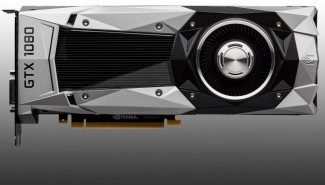
Nvidia supplied us with a GTX 1080 ‘Founders Edition’, which is a reference design, featuring an aluminium shrouded reference cooler and a board featuring just one, 8-Pin 12v power connector – giving this version of the card a TDP (Thermal Design Power) target of 180 Watts. This is the version you can buy right now for $699 (it’s around £649 in the UK). You could buy now and you’ll likely be very happy with the price to performance ratio, but if you hang on a little longer, 3rd party manufacturers have a raft of cheaper, better spec’ed cards on the way, and the ones to look out for are those offering 2+ phase power, supplied by a second 12v connector.
Just 2 examples of 3rd party designs on their way soon are EVGA’s Flagship GTX 1080’s the ‘Classified ACX 3.0’ and the ‘FTW’ editions, both ship with custom power supply solutions and promise out-of-the-box core and memory overclocks (TBD at the time of writing). The former boasts 10+2 power configuration, the latter 14+3.
Both cards will allow more voltage to the GPU’s core, in theory allowing much greater levels of overclocking. Prices in the UK for these cards seem to start at around £578. ETAs for stock of these cards in the UK at least look to be around June 3rd.
It’s not just the TDP benefits of Pascal that make the architecture attractive to overclockers either. The new platform introduces GPU Boost 3, which allows enthusiasts to specify a GPU clock-to-voltage curve for more precise control of overclocking. Below is a shot of our test system applying a basic one-click overclocking profile using a preview version of EVGA’s Precision X. The green curve specifies clock frequency and voltage to be applies at that threshold.
In short, there’s never been an Nvidia card more ready for user overclocking than the GTX 1080 (and the soon to be released GTX 1070), and for once the benefits could be substantial.
WCCF have a good round up of partner GTX 1080s that are on their way here, and don’t forget to check out our VR-centric performance review of the GTX 1080 Founder’s Edition right here.

